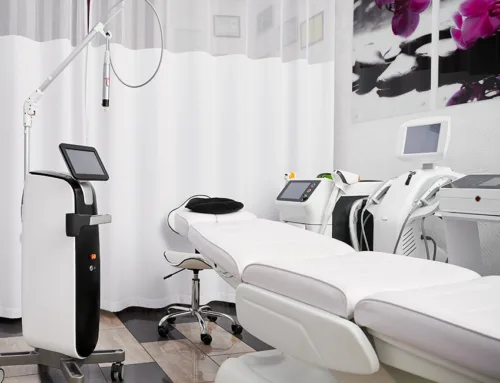Best Healthcare Ads Ideas
In this guide, we delve into essential strategies for crafting healthcare ads that captivate consumers and command attention in the digital realm. Through a blend of strategic planning, insightful thinking, and innovative approaches, we’ll show you how to develop ads that not only keep pace with online trends but also instill confidence ethically. Explore techniques to ensure your healthcare advertising breaks through the noise of the bustling digital landscape.
Key Takeaways
- Effective healthcare ads require storytelling and a deep understanding of the audience, leveraging empathy and a compelling message to build a connection and distinguish the brand.
- Adaptation of healthcare ads for digital platforms is paramount, utilizing data analytics, retargeting, and AI to personalize messages, enhance engagement, and optimize ROI.
- Design in healthcare advertising must not only capture attention but also engage the audience intellectually, using visual consistency and design elements to improve understanding and encourage action.
Crafting a Message That Resonates
To craft creative healthcare advertising that truly resonates, it’s crucial to understand the specific needs and concerns of your audience. By engaging in a dialogue rather than delivering a one-way sales pitch, you demonstrate your understanding of what matters most to them. The key is using storytelling as a tool. This approach breathes life into healthcare brands by fostering stronger emotional connections and encouraging audiences to personally connect.
Storytelling effectiveness hinges on how the story is told. It’s essential for the messaging within these stories to be clear, precise, and engaging to effectively capture attention through compelling narratives, language use, and visual elements. Rather than merely outlining the services offered, communicating the passion behind the daily commitment to healthcare and the benefits it brings to others distinguishes one brand from another.
Crafting messages with universal appeal isn’t always feasible. Such endeavors demand an understanding of specific audience segments, coupled with ongoing communication efforts and empathy. When executed correctly, this strategy holds profound power, capable of significantly altering public perception of healthcare entities. The core aim is to enhance message effectiveness while delivering genuine value.
Optimizing for Digital Platforms
The landscape of healthcare advertising has undergone a significant transformation, with a majority of ad spend now allocated to mobile devices. This shift underscores the importance for healthcare services to tailor advertisements specifically for handheld screens, given consumers’ increasing reliance on mobile devices for health-related information. To maximize the potential of these digital platforms, understanding user behavior through data analysis is paramount.
Data and analytics play a pivotal role in lead generation, allowing for the customization of marketing messages to address individual needs and preferences effectively. By comprehensively analyzing user behavior, you can enhance engagement and maximize return on investment. Retargeting strategies are instrumental in re-engaging individuals who have previously shown interest in your services, thereby enhancing the likelihood of conversion.
However, optimization extends beyond understanding user behaviors; it encompasses leveraging various digital tactics such as paid searches (SEM), search engine optimization (SEO), pay-per-click models (PPC), and targeted email campaigns. These strategies aim to reach potential patients precisely when they require your assistance most. It’s imperative not to overlook the significance of artificial intelligence (AI), which enhances marketing efforts by analyzing both online and offline interaction data, resulting in more finely tuned ad campaigns.
In healthcare advertising, doing well means combining three important things: using digital platforms like websites and social media, using data to make smart decisions, and paying attention to how people react. When these three things work together, ads can grab people’s attention and make them want to take action for their health.
Designing Ads with Consumer Appeal
Graphic design plays an important role in developing creative healthcare ads that not only inform but also engage the target audience. By transforming complex medical information into clear, accessible visuals, graphic design enhances understanding and ensures that the messages within the ads are memorable and impactful.
Maintaining a consistent visual identity across healthcare advertising strengthens brand recognition. This consistency helps build trust among potential patients and enhances the overall appeal of the advertisements, contributing to great healthcare advertising.
Effective graphics not only please the eye but also prompt actions from those seeking care, boosting engagement. They also support storytelling, enabling the effective communication of complex health narratives to specific consumer segments.
In crafting healthcare ads, it’s important to understand that while attracting attention is good, capturing genuine interest is crucial. Proficient graphic design allows you to achieve this dual objective, ensuring that awareness efforts resonate deeply with patients.
Targeting the Right Audiences
Effectively reaching key audiences is crucial in healthcare advertising. Tailored marketing messages based on population health demographics, including:
- Age brackets
- Gender identity
- Socioeconomic levels
- Residential areas
Implementing targeting strategies involves analyzing online behaviors to customize ads appropriately. Data segmentation helps identify patient groups that require more attention, with retargeting campaigns aimed at re-engaging previous users of your services or content.
Legal and Ethical Advertising Practices
In healthcare advertising, creativity and effectiveness are crucial, but they must always align with legal and ethical guidelines. All marketing materials must be presented honestly, avoiding any misleading information, and should be easily recognizable as advertisements. When healthcare providers use deceptive or untrue content in their advertisements, it can damage their reputation.
Promotional communications must convey accurate details. Misrepresenting services or failing to disclose important facts can mislead consumers. Claims about a doctor’s abilities or therapies offered should be supported by evidence, and any financial motivations should be transparently disclosed.
Discriminatory actions and disparaging comments about practitioners are strictly prohibited. Evaluating ad campaigns should consider their intent and potential impact on public perception. Upholding consumer confidence in healthcare advertising means consistently complying with regulations and maintaining high moral standards in communication efforts.
Building Trust with Testimonials and Endorsements
Trust plays a crucial role in healthcare decisions, particularly in the digital era. Testimonials and endorsements are powerful tools for fostering this trust. Research shows that 95% of internet users consider patient comments before making healthcare decisions, and positive online reviews influence 63% of customers.
The trust placed in online reviews and testimonials is comparable to that of personal recommendations, significantly impacting the decisions of new patients. These testimonials not only enhance the credibility of medical care but also strengthen the emotional connection with potential patients.
Successful healthcare advertising campaigns, like New York-Presbyterian Hospital’s ‘Patient Stories’ and the Mayo Clinic’s ‘Sharing Mayo Clinic Blog,’ have effectively leveraged personal narratives to build community and trust. They exemplify the impact testimonials can have on healthcare decisions and trust-building.
Summary
In conclusion, effective healthcare advertising is a blend of various strategies from crafting resonating messages and optimizing for digital platforms to designing consumer-appealing ads and targeting the right audiences. While doing so, it’s crucial to adhere to legal and ethical standards and build trust through testimonials and endorsements. Mastering these strategies not only helps in creating effective healthcare ads, but also in touching lives, raising awareness, and fostering trust.
When identifying target audiences within vulnerable populations, complying with privacy regulations and always keeping an eye toward sensitivity is paramount. Marketing campaigns must prioritize disseminating critical information, addressing concerns, and ultimately enhancing individual well-being.









